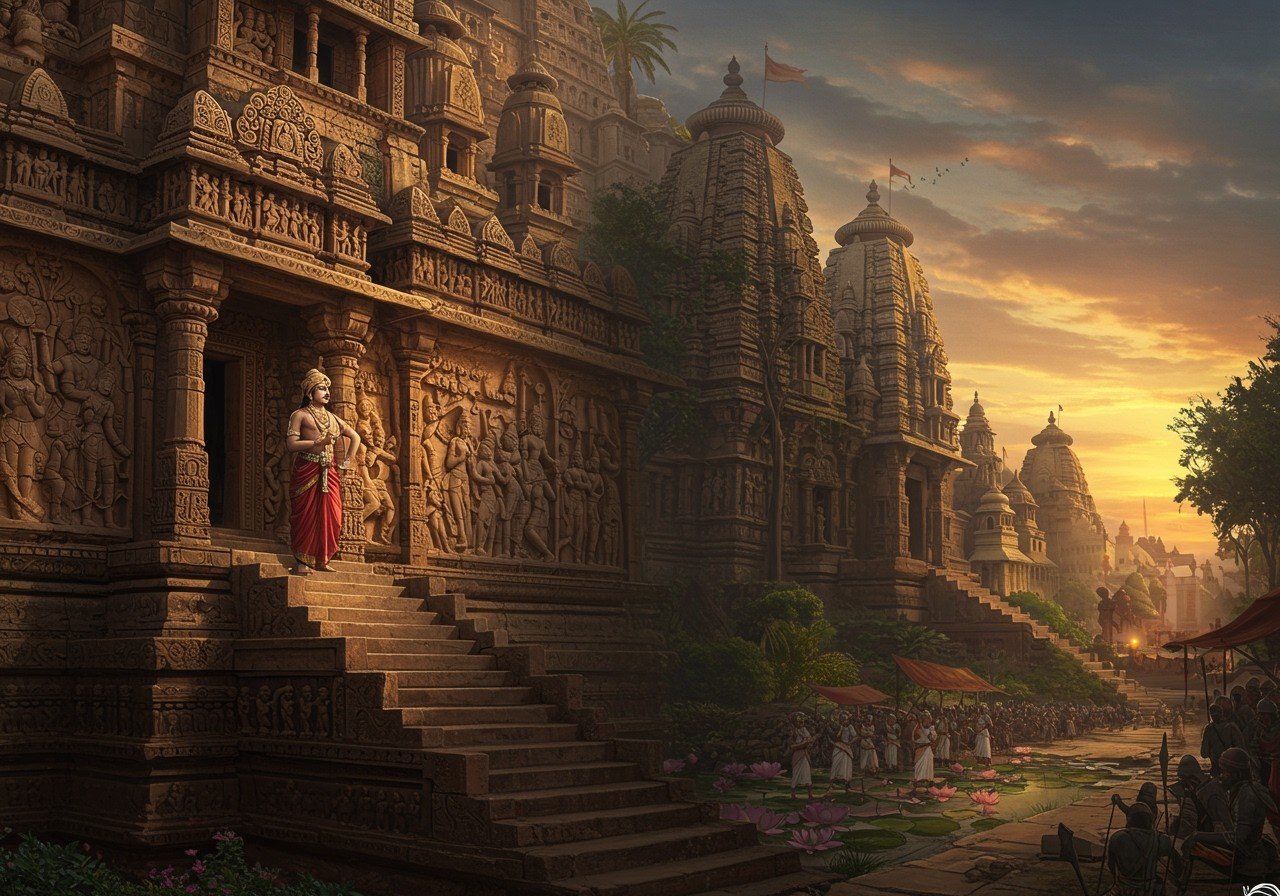
The Somavamshi dynasty, also known as the Keshari dynasty, played a significant role in shaping the cultural landscape of ancient India, particularly in the region of Odisha. This article delves into the history of this influential dynasty, exploring their origins, notable rulers, architectural marvels, cultural contributions, and eventual decline.
Origins and Rise to Power
The Somavamshi lineage traces back to the moon god, Soma, signifying their divine ancestry. The dynasty’s founder, Mahasivagupta Yayati I, established their rule in the early 9th century. Through strategic military campaigns and alliances, Yayati I expanded the kingdom’s territory and laid the foundation for a powerful empire. Early Somavamshi rulers prioritized strong administration and economic growth, fostering trade and agricultural development.
Reign in Odisha (9th-12th Centuries)
The Somavamshi dynasty primarily ruled over Odisha, a region rich in cultural heritage. Their reign, spanning from the 9th to the 12th centuries, significantly contributed to the region’s development, particularly in architecture and the arts. The dynasty established capitals at Yayatinagara (modern Binka) and later at Abhinava-Yayatinagara (modern Jajpur), which became centers of political and cultural activity. The Somavamshi rulers also actively promoted the Odia language and literature, leading to a flourishing of local culture.
Key Rulers and Their Contributions
Several Somavamshi rulers made significant contributions to the dynasty’s legacy:
- Yayati I (c. early 9th century): The founder, known for his military prowess and administrative acumen, established a strong foundation for the dynasty.
- Janmejaya I: Expanded the kingdom’s boundaries and strengthened its military, solidifying the Somavamshi power.
- Yayati II (c. late 10th – early 11th century): His reign was marked by prosperity and cultural growth, including the construction of the magnificent Lingaraj Temple in Bhubaneswar.
Later rulers, however, faced challenges from neighboring kingdoms, leading to conflicts and the eventual decline of the dynasty.
Architectural and Cultural Achievements
The Somavamshi dynasty left an indelible mark on Odisha’s architectural landscape, particularly with their magnificent temples:
- Lingaraj Temple, Bhubaneswar: Built during the reign of Yayati II, this temple stands as a testament to the Somavamshi’s architectural prowess, featuring intricate carvings and a unique architectural style.
- Mukteswar Temple: Known for its ornate carvings and distinctive style, this temple exemplifies the Somavamshi’s patronage of the arts.
- Rajarani Temple: Another architectural marvel showcasing the dynasty’s refined craftsmanship and artistic sensibilities.
Beyond architecture, the Somavamshi rulers championed advancements in sculpture, music, and dance, leaving a rich artistic legacy that continues to inspire today.
Decline and Legacy
The Somavamshi dynasty’s decline began in the late 12th century due to a combination of internal strife and external pressures. Invasions from neighboring dynasties, such as the Chalukyas and Kalachuris, weakened their control over the region. Later rulers struggled to maintain the administrative and military strength of their predecessors, ultimately leading to the dynasty’s downfall.
Despite their decline, the Somavamshi legacy remains deeply ingrained in Odisha’s cultural fabric. Their contributions to art, architecture, language, and literature continue to shape the region’s identity. The historical records preserved in the Madala-Panji chronicle the dynasty’s reign and achievements, providing invaluable insights into their era. The Somavamshi dynasty’s story serves as a reminder of the enduring power of cultural contributions and their impact on shaping history.
Honoring Ancient Traditions with Poojn.in
As we delve into the rich history of the Somavamshi dynasty and their connection to Hindu traditions, Poojn.in offers authentic ritual items to help you connect with these sacred practices. For ceremonies reminiscent of those performed during the Somavamshi era, explore our collection:
- Havan Kunds: Choose from pure copper and brass havan kunds, traditionally used for sacred fire ceremonies, available in various sizes and designs to suit your needs. Discover our collection.
- Yajna Samagri: Find complete yajna samagri sets with all the necessary ingredients, meticulously curated to ensure authenticity and convenience for your rituals. Explore our range of samagri.
- Bell Metal Items: Explore our selection of traditional bell metal items, crafted with precision and reverence, essential for various puja rituals. Find your perfect bell metal items.
- Pure Ghee: Source pure ghee from Indian cows, essential for ritual offerings and maintaining the sanctity of traditional practices. Shop for pure ghee.
- Wooden Items: Discover authentic wooden items crafted from sacred trees, adding a touch of tradition and reverence to your puja space. Browse our wooden collection.
Poojn.in offers doorstep delivery across India, ensuring that you have access to these sacred items wherever you are. Each product comes with usage guidelines to help you maintain ritual sanctity.
Visit Poojn.in to explore our complete range of traditional puja items and connect with India’s rich spiritual heritage.
FAQs on The Somavamshi Dynasty
Who founded the Somavamshi dynasty? The Somavamshi dynasty was founded by Mahasivagupta Yayati I around the early 9th century.
Where was the Somavamshi dynasty primarily located? The Somavamshi dynasty primarily ruled in the region of Odisha, in eastern India.
When did the Somavamshi dynasty rule? The Somavamshi dynasty ruled from approximately the 9th century to the 12th century.
What are some significant contributions of the Somavamshi dynasty? The Somavamshi dynasty made significant contributions to temple architecture, particularly in Odisha, and promoted the Odia language and literature.


